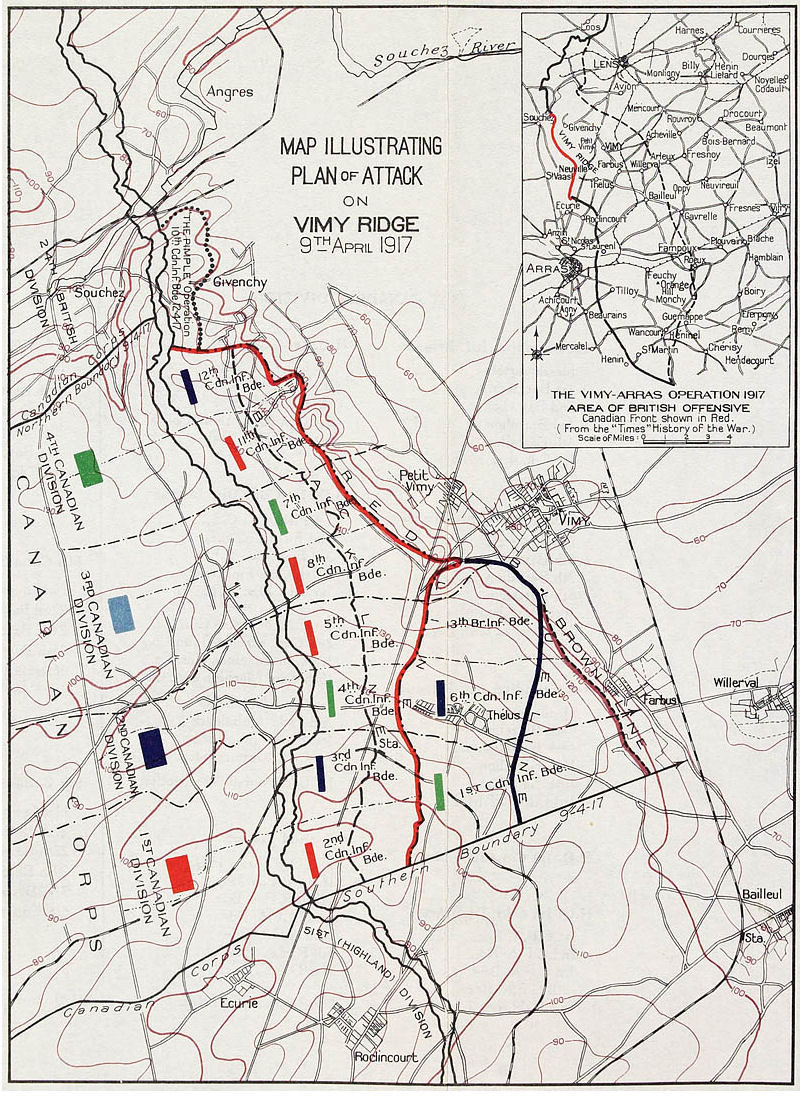The Attack - Part 1
Before launching their attack on Vimy Ridge the Canadian staff used every method they knew to increase the odds of success. The Royal Flying Corps created an air photo compliation of the entire area which interpreters used to identify every trench, belt of barbed wire, cannon, machine gun and bunker entrance. The planners also prepared every unit to know their specific objectives, the units near them, the creeping barrage schedule, and the key identified defensive points.
Before the attack the Canadians assembled the greatest concentration of artillery in the war to that date. The combined British and Canadian artillery consisted of over 245 major siege guns, 620 guns for counter -battery fire and the creeping barrage, and 120 trench mortars. This was three times as many guns as were used in the bombardments at the Somme.
The counter-battery units used flash and sound triangulation plus air photos to locate the German gun positions. Over a week long bombardment they eliminated as many of these as possible. Britsh and Canadian batteries worked with infantry units to synchronize their timing for the creeping barrage, while other batteries forced the Germans underground for a full week of shelling.
In preparation for the assault, British "sapper" companies dug twelve major tunnels ten metres undergrund and up to 1.2 kilometres in length. These allowed attackers and reinforcements to cross No Mans Land safely and in secret. As well, tunnels and underground caverns hid men, ammunition and supplies from German eyes.
The Canadian staff planners wanted each Company, Platoon and Section to understand its objectives and to have flexibility in how it achieved those objectives. The entire attack was broken down into platoon level objectives. Every Canadian unit was trained to know the battlefield, their tasks, and the tasks of the units beside them. The soldiers practised movements on a full-sized mock battlefield as well as studying a scale model of the entire battlefield and receiving lectures, maps and briefing notes on their objectives.

British General Julian Byng commanded the four Canadian attacking divisions plus a reserve force. This was the first time all four Canadian divisions would fight together. The 4th Canadian
Division was responsible for the northern portion of the advance including capturing the highest point of the ridge, followed by the heavily defended "Pimple". The 3rd Canadian
Division was responsible for the narrow central section of the ridge. The 2nd Canadian Division was directly south of 3rd Canadian Division and entrusted with the capture of the town of Thélus.
The 1st Canadian Division was responsible for the broad southern sector of the corps advance. Because of the more level terrain the Canadians were expected to advance the greatest distance.
Byng planned for a healthy reserve for contingencies that included reinforcing attacks or dealing with German counter-attacks.
After seven days of intense shelling, called the "Week of Suffering" by the Germans, the Canadians were ready to attack!
